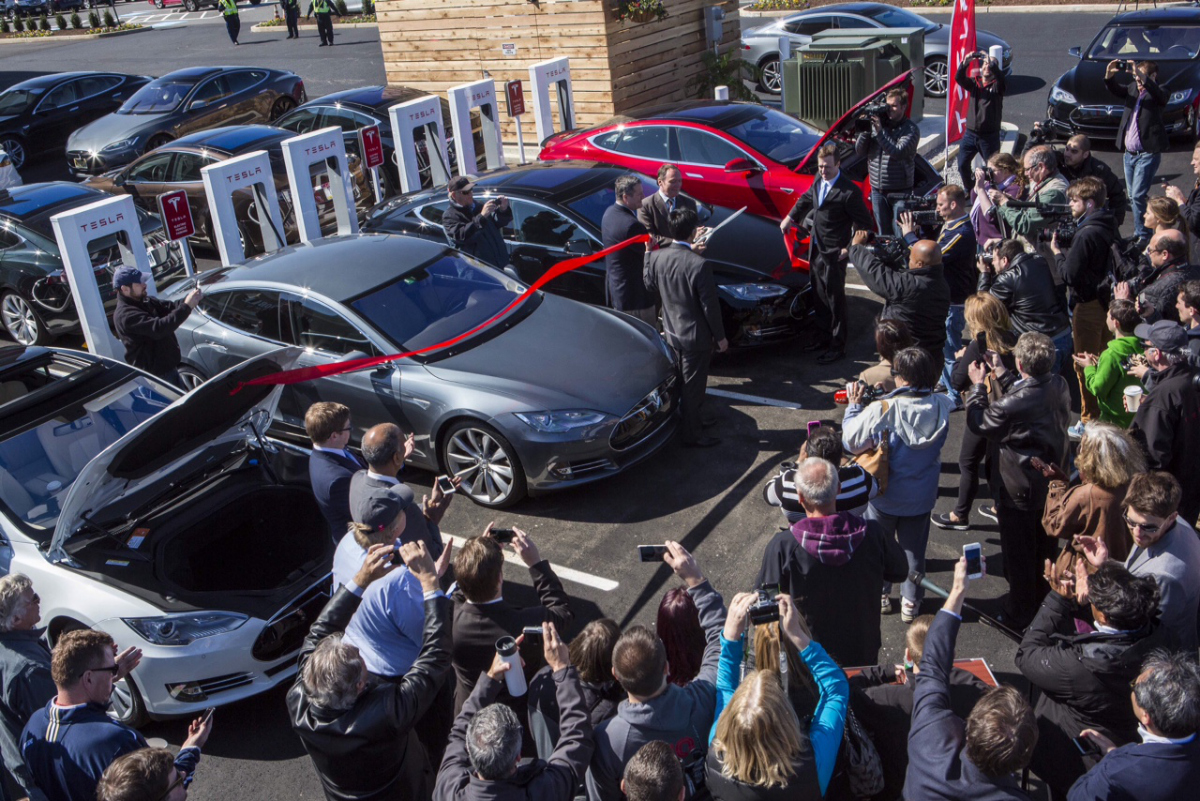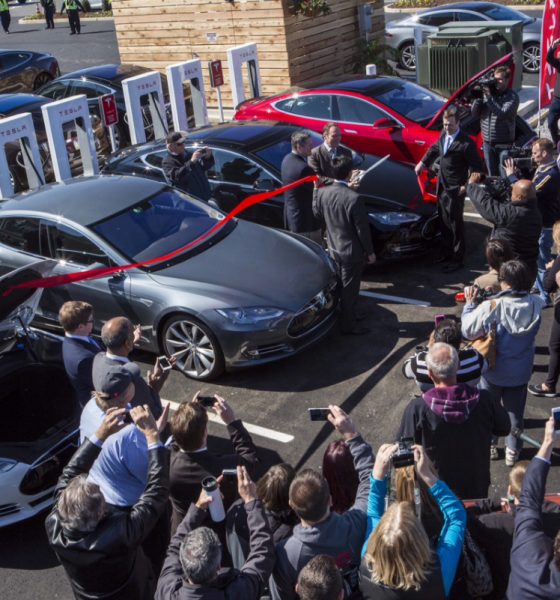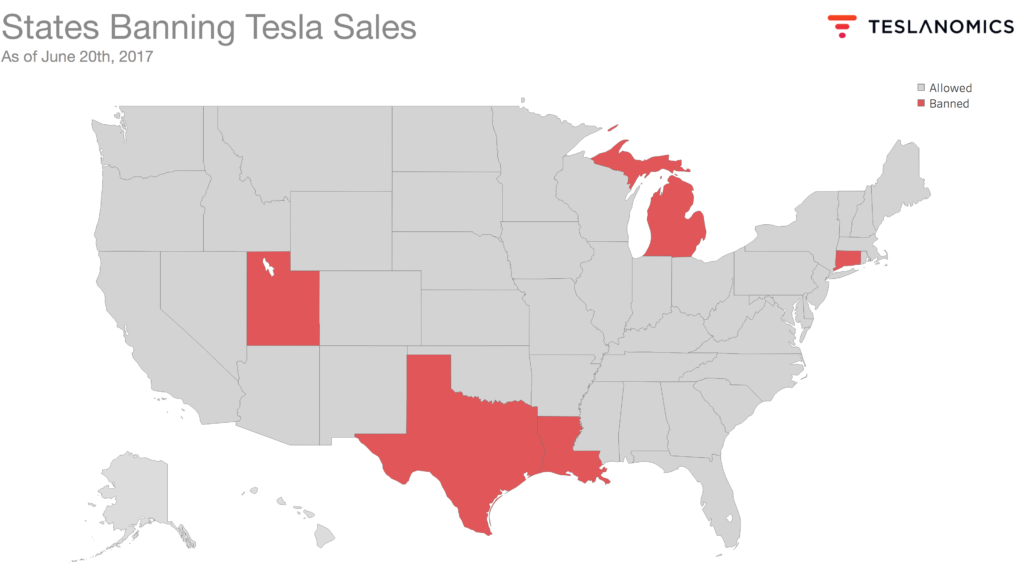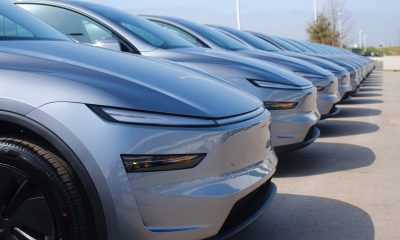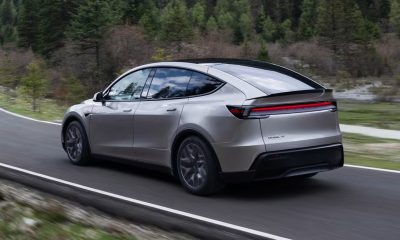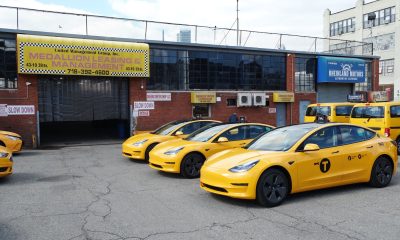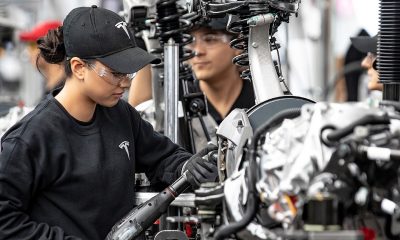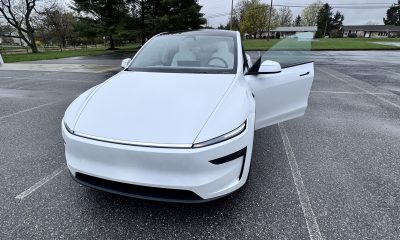Tesla’s unique business model allows them to sell vehicles directly to consumers through both retail locations and Tesla’s online design studio. Direct-to-consumer sales of its vehicles have led to some turbulence with existing car dealerships in many states, including Utah, Louisiana, Connecticut, Texas and Michigan. New Jersey allowed Tesla to open direct sales in the state in 2015, but with conditions. New Jersey’s legislation limited the number of direct-to-consumer dealerships per manufacturer to four stores and required at least one service center in the state. Tesla CEO Elon Musk once compared local car dealers to a mafia protection racket, stating in a Tesla blog post, “The rationale given for the regulation change that requires auto companies to sell through dealers is that it ensures ‘consumer protection’…Unless they are referring to the mafia version of ‘protection’, this is obviously untrue.”
Tesla recently launched a lawsuit to overturn a sales ban put into effect in Michigan in 2014 that prevents the Elon Musk-led electric carmaker from selling directly to consumers within the state. The greatest opposition against Tesla’s plea for direct sales in Michigan comes from both auto dealers and manufacturers, who argue that Tesla disrupts the traditional franchise dealership model.
Courtesy of Teslanomics.co
Ironically, Michigan and Texas which bans Tesla’s direct sales model have public pensions that are significant investors in the Silicon Valley company. However, that isn’t the only financial interest states have in Tesla. All states in the US rely heavily on sales tax to generate revenue. States without stores are forcing owners to purchase and service their vehicles out-of-state, missing out on sales tax in the process, a major revenue loss.
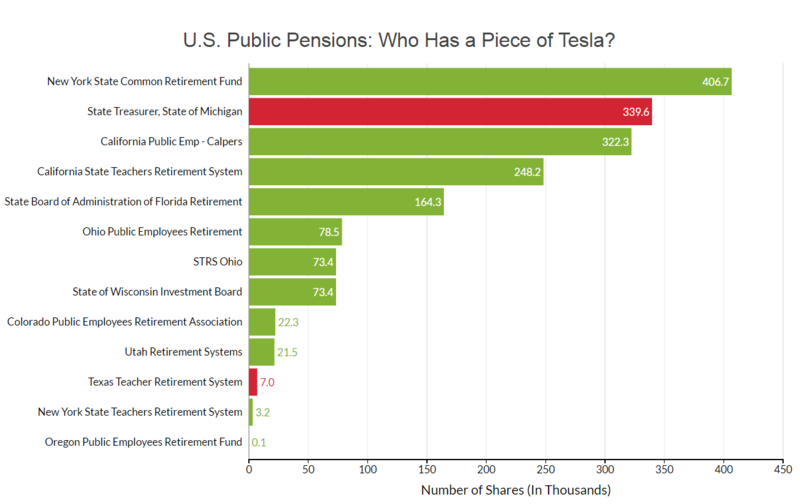
Source: Bloomberg, September 2016
Bill Wolters, of the Texas Automobile Dealers Association, is claiming that the introduction of Tesla into the Texas car market would “reduce competition”, and will incur costs for Texas. However, this argument assumes that dealers are creating added value for their consumers, and if that argument holds, then dealers should be able to keep customers in the market after Tesla enters. Additionally, Tesla is competing against other manufacturers and not franchises.
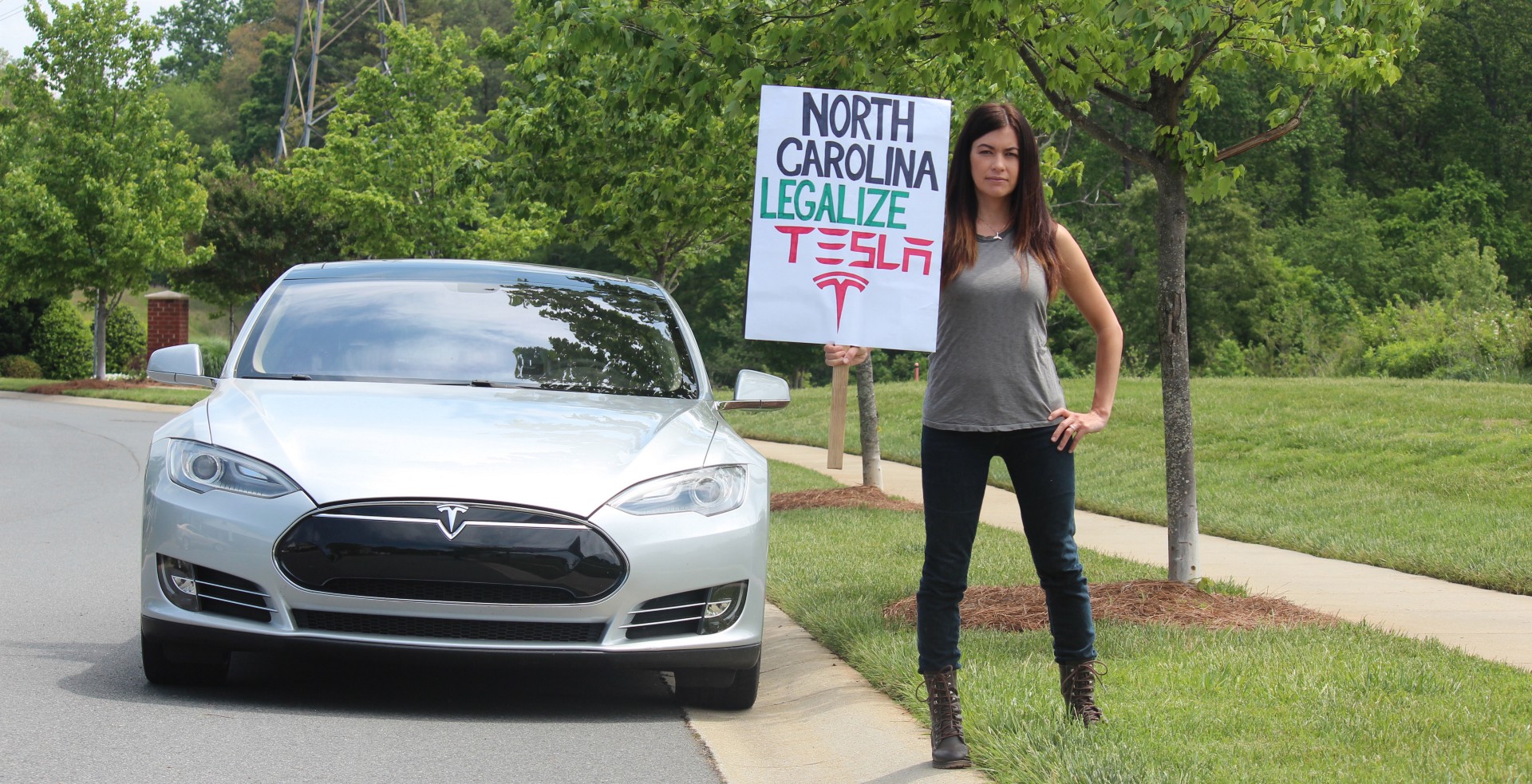
Racecar driver and environmental activist Leilani Munter protest’s North Carolina’s ban on Tesla’s direct sales model (Photo: Medium/Leilani Munter)
Out of a presumed 400,000 reservations for the Tesla Model 3, it is estimated that roughly half originate from the United States, according to the distribution of early Model 3 reservation data from Model3Tracker.info. Using a loosely estimated assumption of Tesla Model 3 reservations originating from banned states via Model3.ocasual.com, we get the following numbers: 1,250 in Louisiana, 2,980 in Connecticut, 3,076 in Utah, 15,670 in Texas, and 4,230 in Michigan.
The sales tax for Michigan is 6%, Louisiana is 9%, Connecticut is 6.35%, Utah is 4.7%, and Texas is 6.25%
This equates to a loss of $8,883,000 for Michigan, $3,937,500 for Louisiana, $34,278,125 for Texas, $6,623,050 for Connecticut, and $5,060,020 for Utah. That’s a total of $59,791,695 in loss revenue, which does not factor in current sales of Model S and Model X.
| States with Tesla Ban | Sales Tax | Estimated Tesla Model 3 Reservations | Projected state revenue loss (in dollars) |
| Louisiana | 9% | 1250 | $3,937,500 |
| Texas | 6.25% | 15670 | $34,278,125 |
| Michigan | 6% | 4230 | $8,883,000 |
| Connecticut | 6.35% | 2980 | $6,623,050 |
| Utah | 4.70% | 3076 | $5,060,020 |
Navigant Research believes that sales electric vehicles, including hybrid/plug-in hybrid, are set to comprise 9 percent of total vehicle sale by 2025. Currently, EVs make up 3% of total vehicle sales, but the number in 2016 saw a 36 percent increase in sales in the US alone. In 2016, 4,500 EVs were sold in Texas, 2,470 in Michigan, 270 in Louisiana, 1,452 in Connecticut, 1,132 in Utah, and 70 in West Virginia. Texas, Connecticut, and Michigan ranked among states with some of the highest EV sales. Of electric vehicles sold total in 2016, the Tesla Model S was the leading electric vehicle with ringing in at 29,156 vehicles. The Tesla Model S also outsold its entire class of vehicles, combined. Tesla is expecting high demand for Model 3, which will start at roughly half the cost of the Model S.
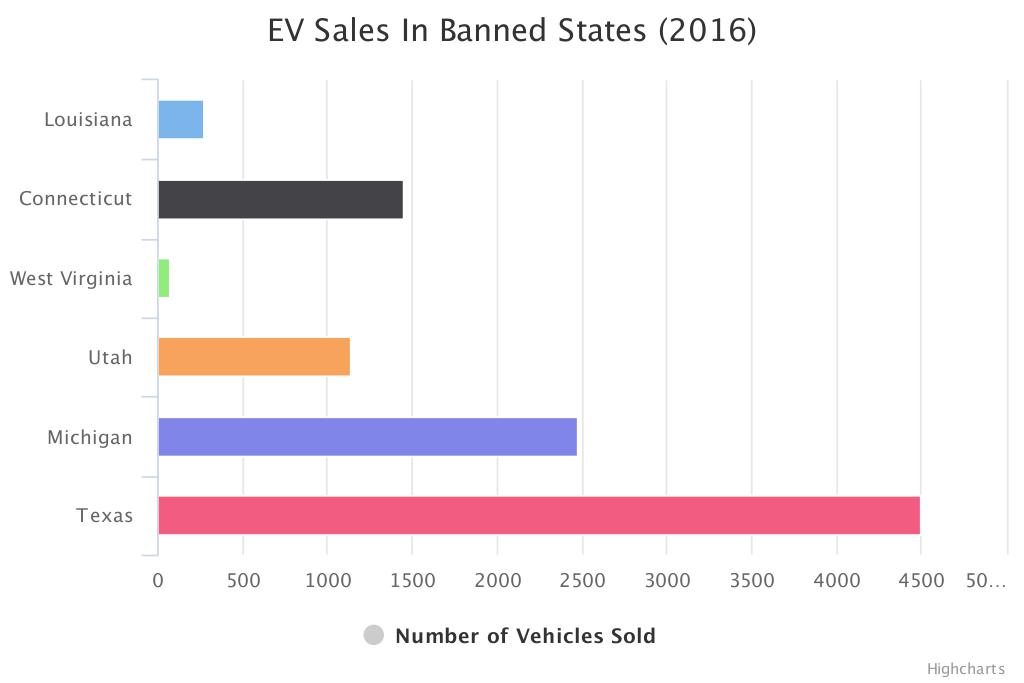
Source: Topspeed.com
There are currently 223,319 estimated Model 3 reservations in the United States, far greater than the sales of comparable vehicles. The BMW 3 and 4 series which sold around 106,000 vehicles in 2016 and the Mercedes C-Class sold around 77,000 vehicles in 2016. Tesla CEO Elon Musk is expecting to produce 500,000 vehicles in 2018 and tens of thousands this year (Tesla hasn’t released Model 3 production guidance for 2017). Musk’s expectations could make the Model 3 the highest selling vehicle in its class in both 2017 and 2018. The states that ban Tesla dealerships not only miss out on sales tax revenue from Tesla vehicles but in turn create an inconvenience for residents. By instating a direct sales ban on Tesla before the launch of Tesla Model 3, states will not only lose millions of dollars in sales revenue per year but also interfere with and disrupt free market competition and consumer activities.
Feature image courtesy of Delanman via Twitter.
Elon Musk
Tesla CEO Elon Musk to provide more details for Master Plan Part IV
Musk stated that he would be adding specifics to the plan in a later update.
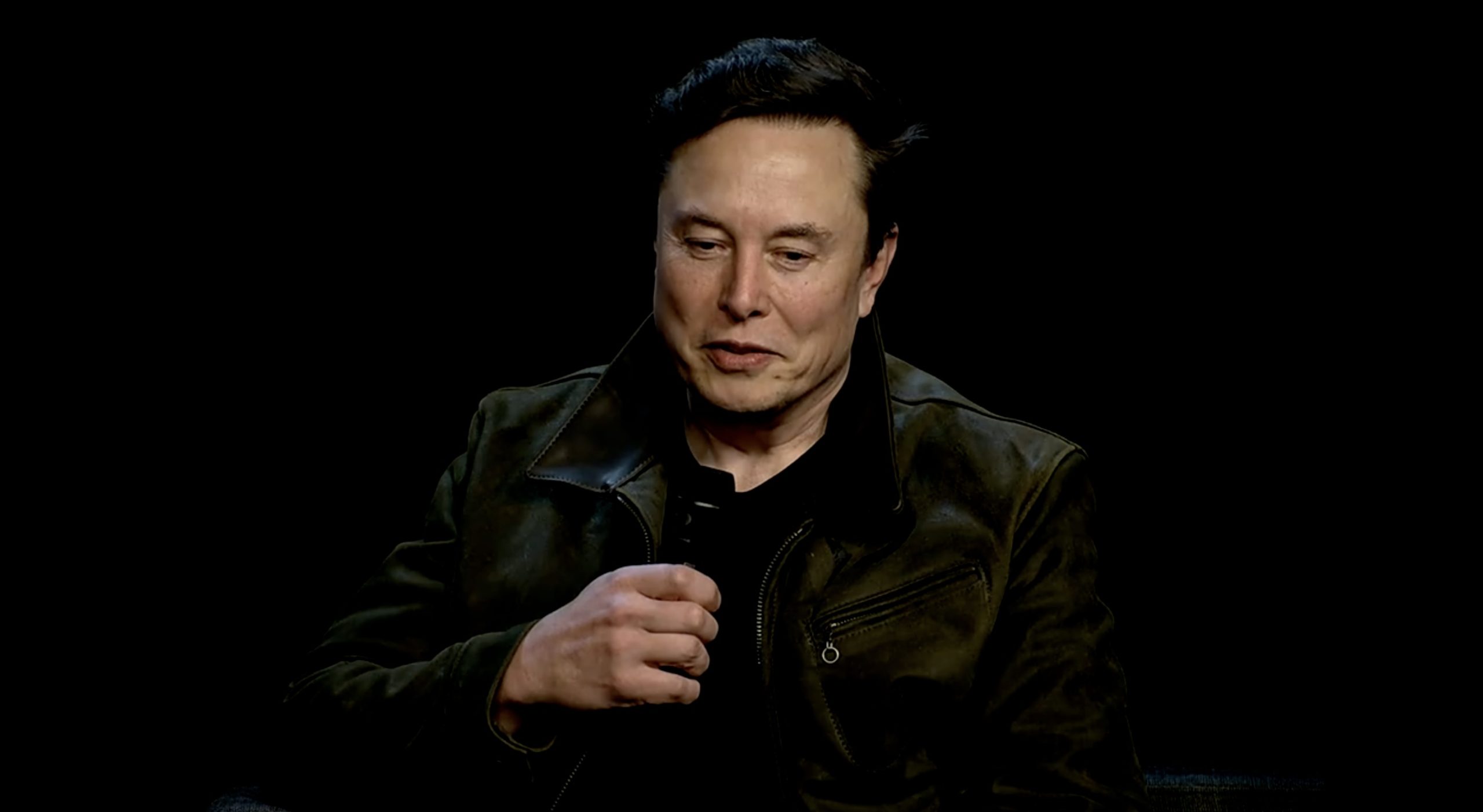
Tesla CEO Elon Musk will be adding more specifics to the recently-released Master Plan Part IV. Musk shared the update on social media platform X amidst conversations about the general nature of the Master Plan Part IV.
In a conversation on X, Musk responded to a post from Tesla retail shareholder and bull Dave Lee, who observed that the currently released Master Plan Part IV could really just be the introduction to the real plan due to its absence of specifics.
Elon Musk responded, stating that he would be adding specifics to the plan in a later update. “Fair enough. Will add more specifics,” Musk wrote in his post.
Tesla has been following Elon Musk’s Master Plans for decades. The first Master Plan, released in 2006, outlined the company’s path from the original Tesla Roadster to the Model 3, as well as the first steps for Tesla Energy. Master Plan Part Deux, released in 2016, covered the ramp of Tesla Energy, the expansion of Tesla’s vehicle lineup, and the rollout of a Robotaxi service.
Master Plan Part 3 was more ambitious as it was generally an in-depth proposal for achieving a global sustainable entry economy by transitioning to electricity-powered vehicles, homes, and industry, which will, in turn, be powered by renewable energy sources like solar and wind. Master Plan Part 3 also included a five-step plan to accomplish this, allowing the world to transition to a fully electrified future.
Master Plan Part IV, which was released a few days ago, focused on automation and artificial intelligence to achieve sustainable abundance. But while the first two Master Plans were very clear and specific and Master Plan Part 3 was very in-depth, Master Plan Part IV was quite general and vague in comparison. It was easy to tell that Optimus would play a big role in the pursuit of sustainable abundance, but apart from that, there were no specifics as to how Tesla intended to achieve its goals.
Fortunately, these specifics would be discussed by Musk in a later update to the plan.
News
Tesla just had its best wholesale month this year in China
Tesla China’s wholesale figures include both vehicles that are sold domestically and exported abroad.

Tesla China just had its best wholesale month this 2025 so far. In August, the electric vehicle maker sold 83,192 vehicles wholesale, a 22.55% increase compared to July 2025’s 67,886 units.
Tesla China’s wholesale figures are still down year-over-year, but the company’s momentum seems notable, especially with the arrival of the Model Y L.
August 2025 figures
As noted in a CNEV Post report, August 2025’s 83,192 wholesale figures are 4.04% less than the 86,697 units that were sold in the same period last year. It is, however, a 22.55% improvement from the previous month. From January to August, Tesla China sold 515,552 units wholesale, a 12.24% year-over-year decrease.
It should be noted that Tesla China’s wholesale figures include both vehicles that are sold domestically and exported abroad. With this in mind, August’s results bode well for Tesla China, as it suggests that Gigafactory Shanghai is now hitting its pace with both its domestic deliveries and its exports. Giga Shanghai serves as Tesla’s primary vehicle export hub.
Model Y L factor
Tesla had a challenging first quarter this year, thanks in part to the changeover to the Model Y across the Fremont factory, Giga Texas, Giga Shanghai, and Giga Berlin-Brandenburg. This changeover resulted in low sales in the first quarter. Political controversies surrounding Elon Musk and violence against Tesla stores and vehicles in the first and second quarters in the United States and Europe did not help much either.
This Q3, however, Tesla seems to be hitting its stride, especially in China. The launch of the new Model Y L has allowed Tesla to compete in the six-seat, large SUV segment, a market that was previously closed to the standard Model Y. Reports have suggested that Tesla China has been seeing a lot of demand for the Model Y L, which should help the company achieve higher sales this quarter and the remaining months of the year.
News
Tesla Model Y L sales have been incredible since launch: report
Tesla China’s sales this third quarter could see a notable improvement.
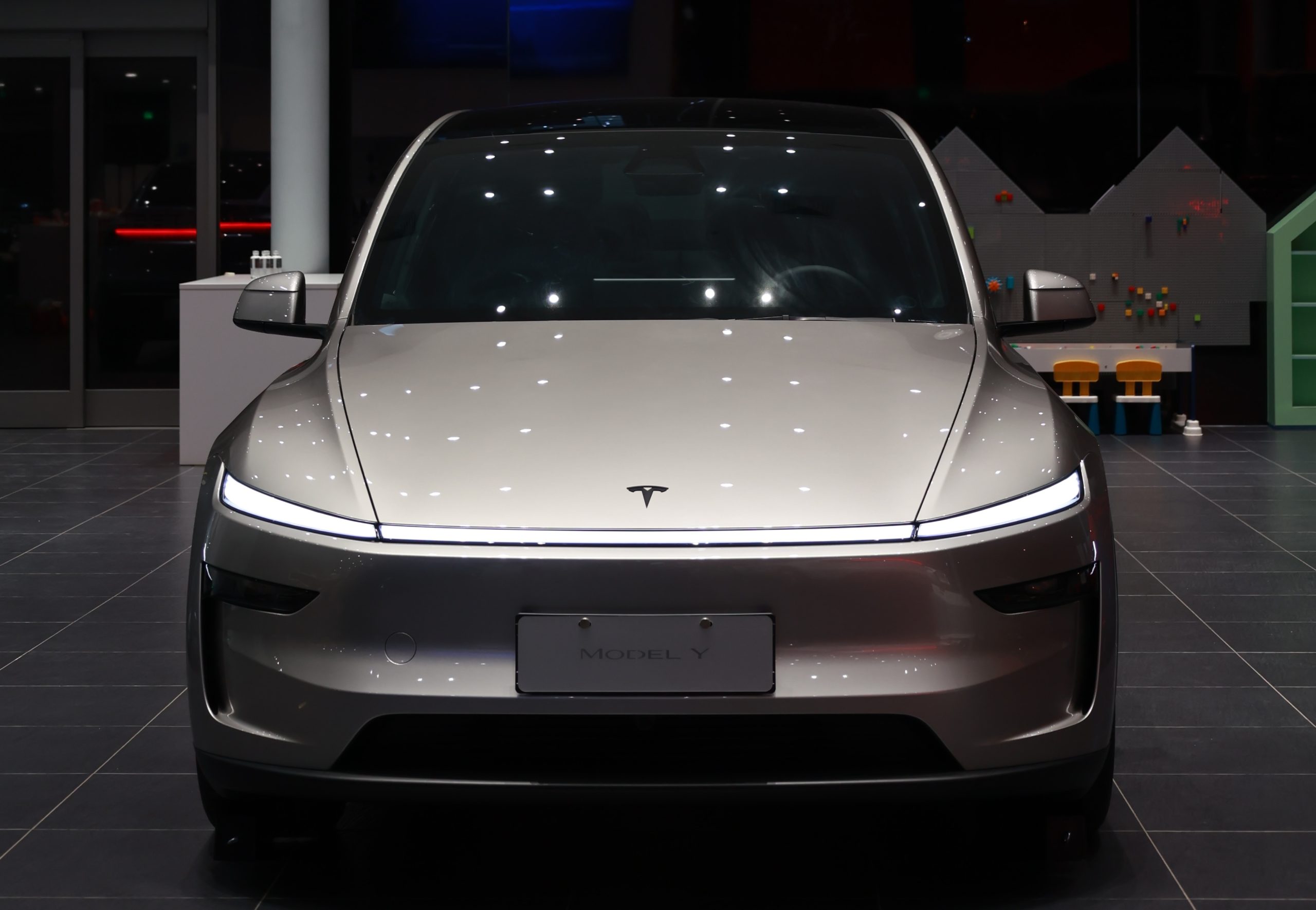
A recent report from China has suggested that the Tesla Model Y L has been seeing an impressive volume of orders since it was launched last month.
Amidst the Model Y L’s rollout, Tesla China’s sales this third quarter could see a notable improvement.
Model Y L orders
Citing information from a salesperson from a Tesla store in Beijing, media outlet Cailianshe stated that the Model Y L has been resonating well with consumers, particularly bigger families that need more space for their children. The salesperson stated that since the vehicle’s unveiling in China, the Model Y L has garnered 120,000 orders, and almost 10,000 new orders daily.
“(The Model Y L) is selling very well. Since its launch, 120,000 orders have been received, with nearly 10,000 orders placed every day. The first batch of customers began receiving deliveries in the past two days,” the Tesla representative noted.
More momentum
China is the world’s largest electric vehicle market, and it is also the most unforgiving and competitive. While the standard Model Y consistently performed well in the premium crossover SUV segment, it was high time for Tesla China to offer a larger vehicle for domestic consumers. There are quite a lot of customers, after all, who need more space than what the standard Model Y could offer.
The Model Y L’s spacious interior seems to be well appreciated by consumers, with the Tesla Beijing salesperson noting that the vehicle’s excellent rear seats have been a notable selling point. “Although the Model YL is a bit more expensive, it has more space and a more flexible rear seat, making it perfect for families with children,” the representative added.
-
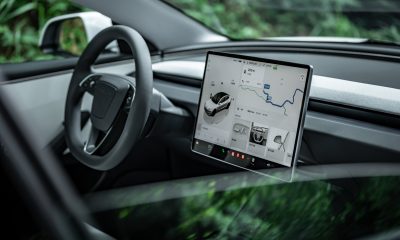
 News4 days ago
News4 days agoTesla is overhauling its Full Self-Driving subscription for easier access
-
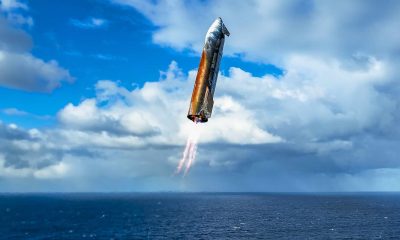
 Elon Musk5 days ago
Elon Musk5 days agoElon Musk shares unbelievable Starship Flight 10 landing feat
-
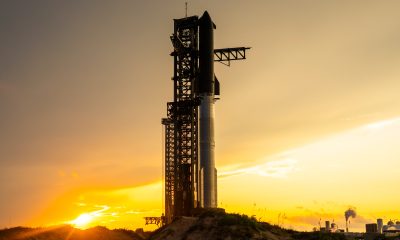
 Elon Musk6 days ago
Elon Musk6 days agoElon Musk reveals when SpaceX will perform first-ever Starship catch
-
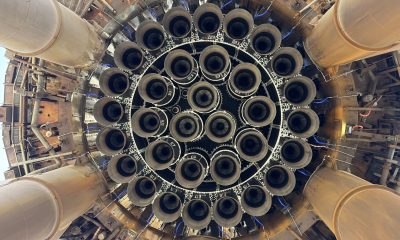
 Elon Musk7 days ago
Elon Musk7 days agoSpaceX Starship Flight 10 was so successful, it’s breaking the anti-Musk narrative
-
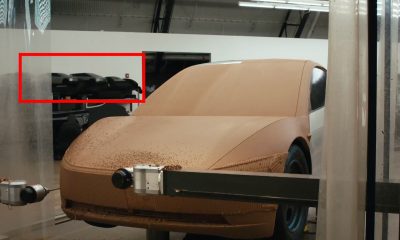
 News2 days ago
News2 days agoTesla appears to be mulling a Cyber SUV design
-
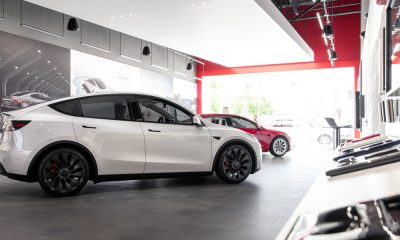
 News5 days ago
News5 days agoTesla expands crazy new lease deal for insane savings on used inventory
-
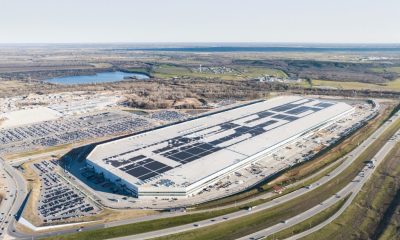
 News5 days ago
News5 days agoTesla talks Semi ramp, Optimus, Robotaxi rollout, FSD with Wall Street firm
-
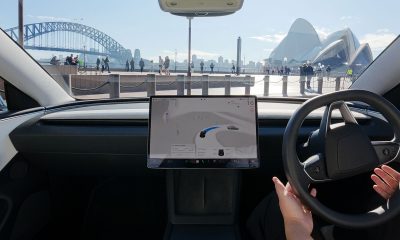
 News6 days ago
News6 days agoTesla launches Full Self-Driving in a new region

